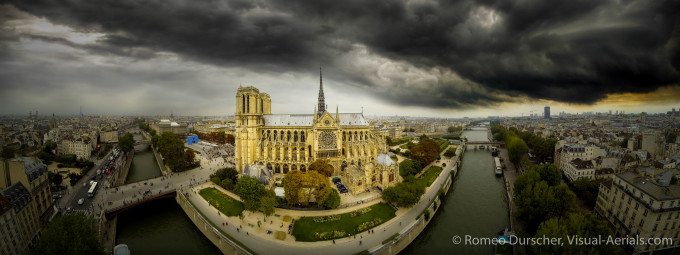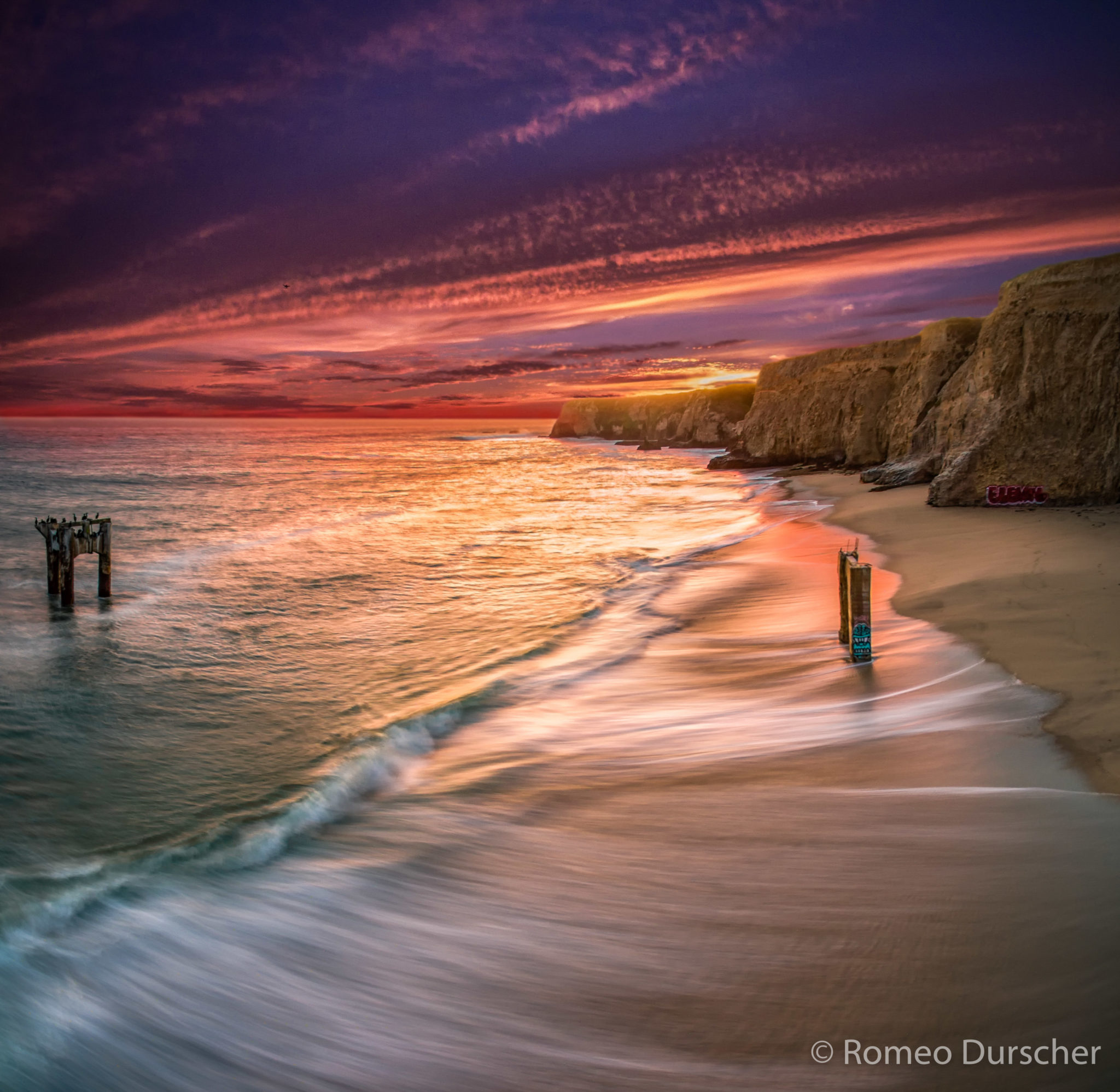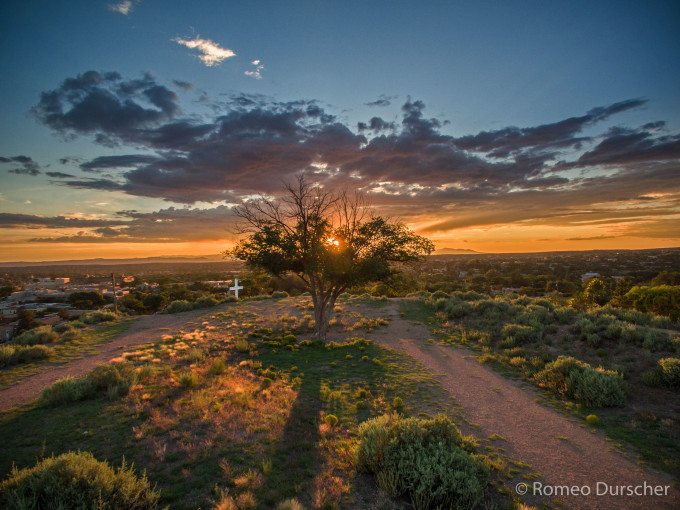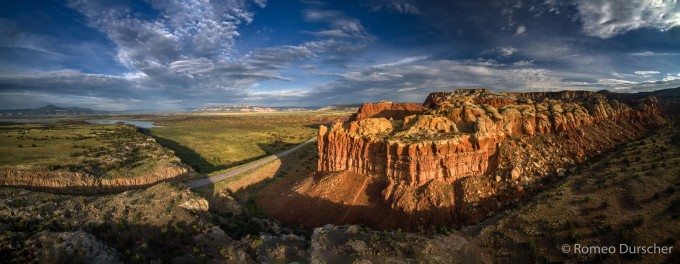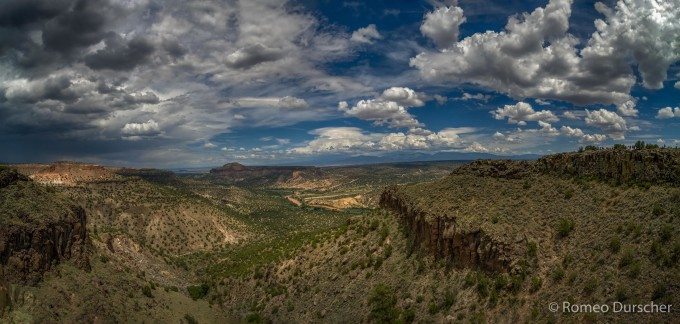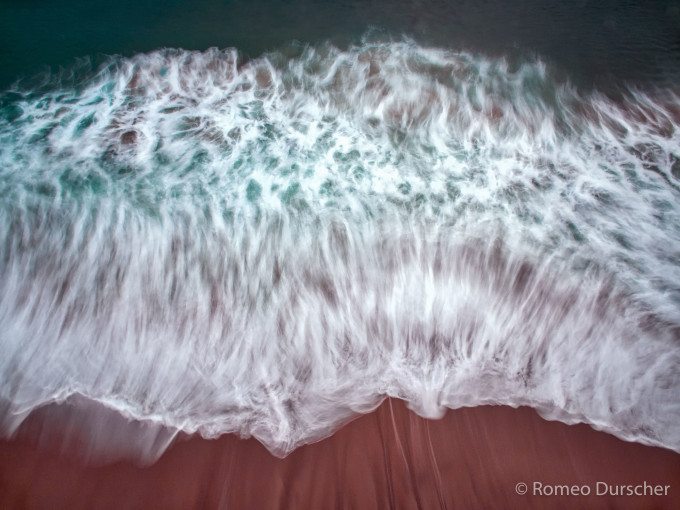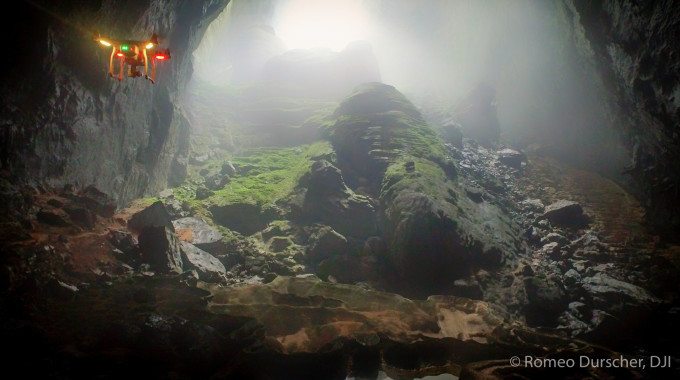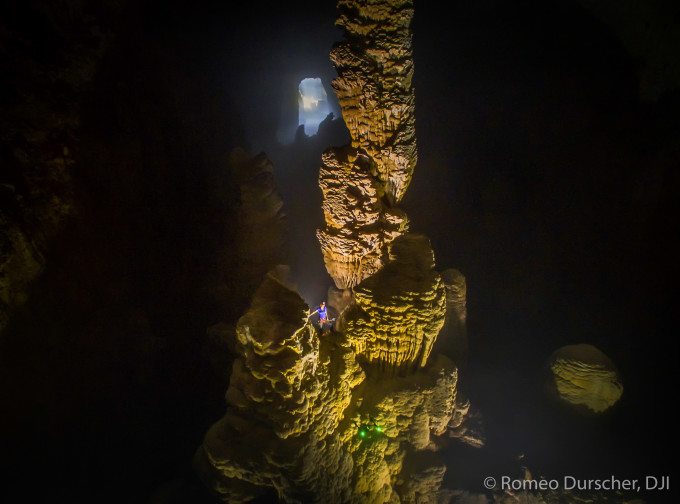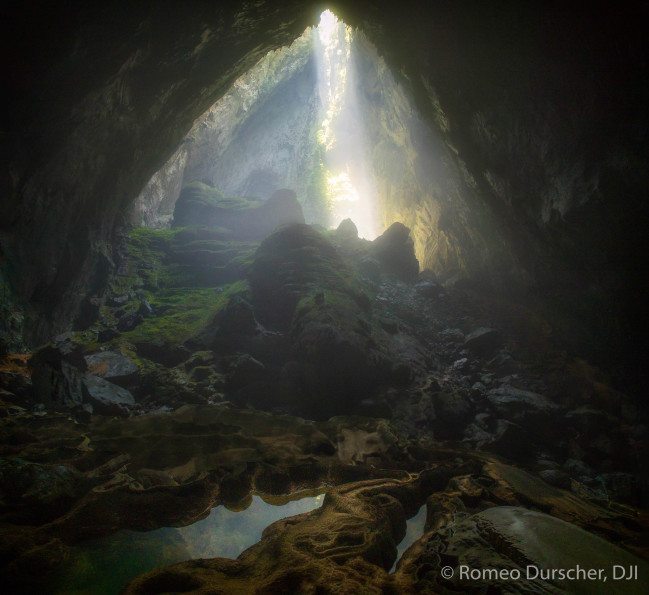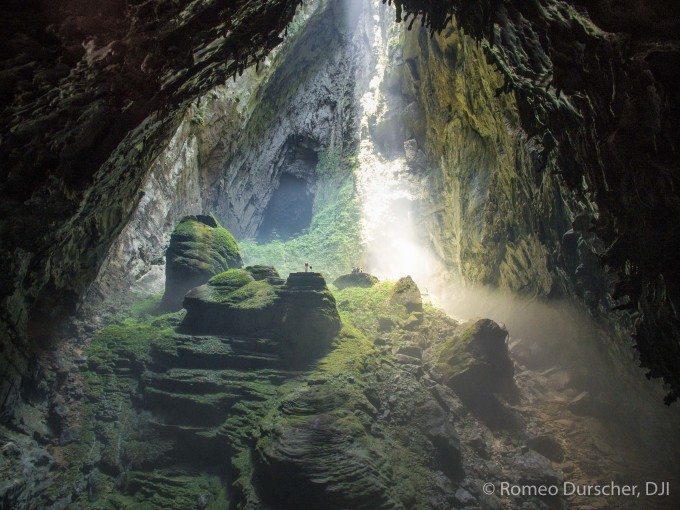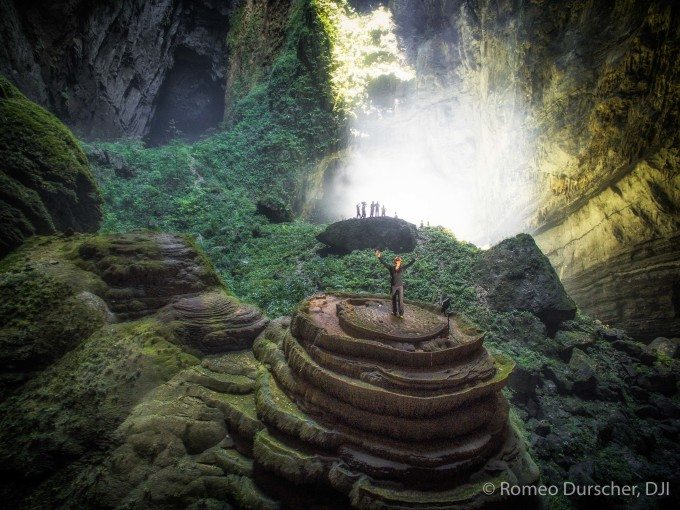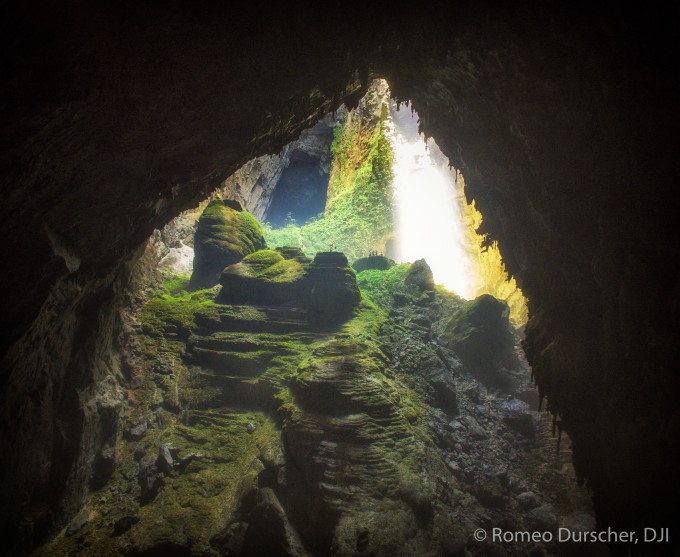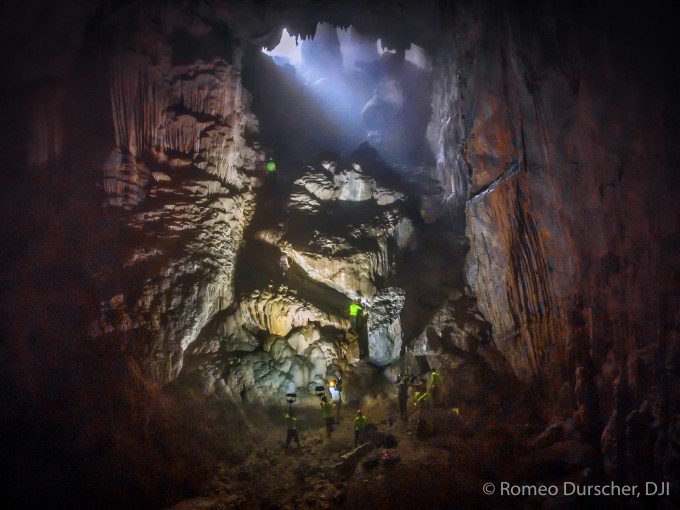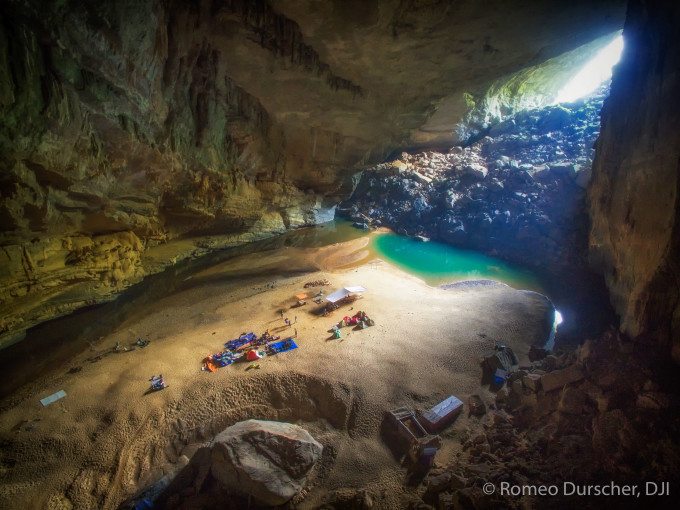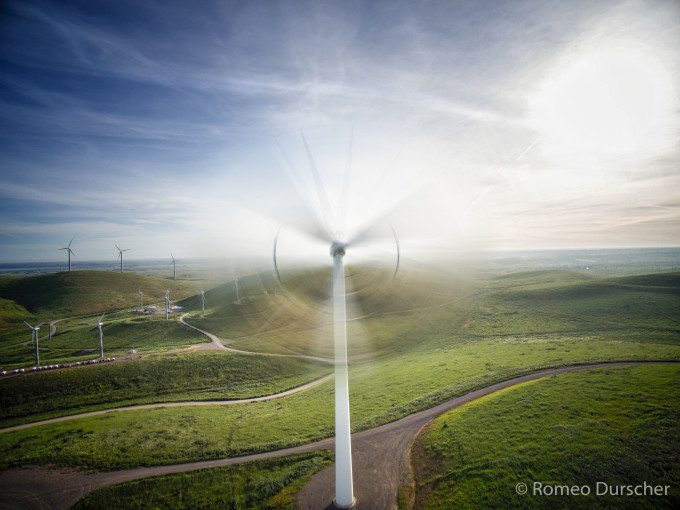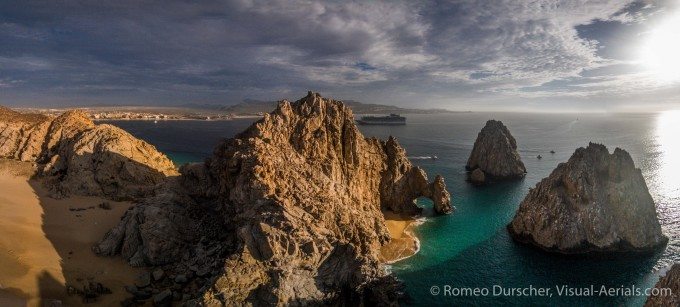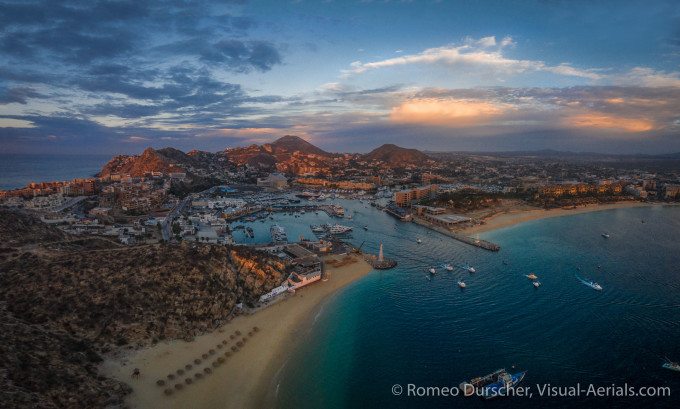Last Updated on 08/24/2015 by Chris Gampat
All images by Romeo Durscher. Used with permission.
Romeo Durscher is the Director of Education at DJI–and he’s quite the photographer. Soem of his work is being featured in San Francisco in a gallery exhibit called “Perspectives by SkyPixel.” The gallery features images by the SkyPixel community and is currently on a travelling tour around the US, Europe and Asia in an effort to inspire people to get out there shooting and making prints of their work.
The idea of taking photos with a bird’s eye view is a recent one, and even Romeo admits that it was tough to get used to. Romeo grew up in fascination at developing film in the darkroom when his father was so passionate about it–but the costs put him off. Instead, he got into digital photography then started experimenting with drones in 2012.
Romeo got a chance to tell us about the learning experience.
Phoblographer: Talk to us about how you got into photography.
Romeo: When I was a kid my dad had a darkroom and produced black and white images. I was amazed by the magic of dipping white paper into “water” and after letting it dry, there was actually an image on the paper. To me that was truly fascinating and started my interest in photography. A few years later I got an old camera from my dad with one roll of exposures – 24 exposures to be exact. I was very careful in what I captured and so I didn’t really get to practice much. Then I learned about the cost of developing those pictures and I pretty much shelved the camera.
Many years later, digital cameras started to appear and I got my first digital camera. Not having to worry about film and the cost to develop shots, I really started getting into photography again. It was great because I could pick and choose which pictures, if any, I wanted to have printed. I did a lot of concert photography and my friends and family always asked me to take pictures at parties.
In 2012 I started playing around with drones and quickly realized that if you put a camera on them, you can actually capture a familiar location from a different perspective. So that’s what started my interest in aerial photography and I quickly focused on taking aerial panoramas.
Phoblographer: What attracted you to landscapes?
Romeo: I started using aerial photography platforms (or drones) and saw the potential of this technology very quickly. For a century we had been taking images from eye level only. Now we are able to take the camera a few feet higher and see our surroundings from a very different perspective. Since you are outside with your drone, you pretty much end up doing landscape photography, but from the air. However, doing aerial photography means you do have to change your mind-set a little. From the air, one is able to capture much more landscape but that can also become somewhat boring for the viewers. So it is not as simple of just taking a few aerial images and thinking all of them are winners.
Phoblographer: The whole phenomenon of shooting images with a drone is a fairly recent one. When you started doing it, how did your thought process start to creatively adapt to the new situations?
Romeo: It certainly was a learning experience. It’s interesting to look back because in the very early days (early 2013), pretty much any aerial picture was a hit – edited or not. Because it was all so brand-new, you could post an image and people would comment and like it left and right. Some of the shots I took had never been seen before – as it would have been dangerous or difficult to get to that location by helicopter. So the novelty of it made it an immediate success. But once that wore off, it became more about composition.
I was working on a NASA space mission which was observing the Sun. I had always loved using sunlight in my images and so I started putting the Sun strategically in my shots; behind a building, behind a flag, behind a tree line, etc. This also meant I was doing a lot of sunrise and sunset images. That worked out very well as the light in the morning and the evening is just so beautiful. Then I started focusing on aerial panoramas. You can capture so much more in a panorama and it’s again about that never-before seen view.
Phoblographer: How do you go about finding the specific locations that you shoot? Many landscape photographers these days tend to use Google Maps.
Romeo: There are several things I do. Before I travel to a new location I do some research on what is around. I do like to put something in my foreground, a tree, a hill, a building, etc., so I can get some depth to my shot. I do use Google Maps but I also look at Skypixel.com and try to find images from that new location ahead of time to get an idea.
I have learned that oftentimes I start with a certain vision and once I get into the air, I tend to discover something that I had not seen before. Perhaps a pattern on the ground, or a different hill, or the clouds look amazing. So I change my focus because I discovered something new. That’s just another wonderful thing about aerial photography – no matter how well you know your location, the moment you go up in the air, there is more to be discovered.
Phoblographer: One of the coolest things about drone photography is that it gives you a much different perspective. But with that perspective, how do you go about narrowing down your work to only the very best when in reality, many folks will always be captivated by a bird’s eye view?
Romeo: I believe that is true for all of photography. It’s never easy to pick your best shots and oftentimes the images that I don’t like, others enjoy the most. It’s a constant battle. While the bird’s eye view is still a novelty, people have gotten a little used to it. Nevertheless, the dream of flight has been with us from the beginning and we all enjoy that aerial view. We look out the window on an airplane, we enjoy Google Earth and people love watching NASA Earth images from Space. It’s fascinating to see our homes from above.
Phoblographer: How did you go about choosing images for this gallery? That’s always an arduous process for photographers.
Romeo: That is never an easy task and sometimes it really helps to have a couple of trusted people look over images. We all have different preferences and that makes it a fun process. What one really likes, somebody else may not enjoy as much. So it’s trying to find a balance. In my case, we picked a couple of the more unique images, like the Chicago Tiny Planet and the Son Doong Beam of Light images. Those are not seen very often. Then also some more famous places, like Notre Dame de Paris and Cabo San Lucas. It’s always great to see a familiar location from a very different perspective.
